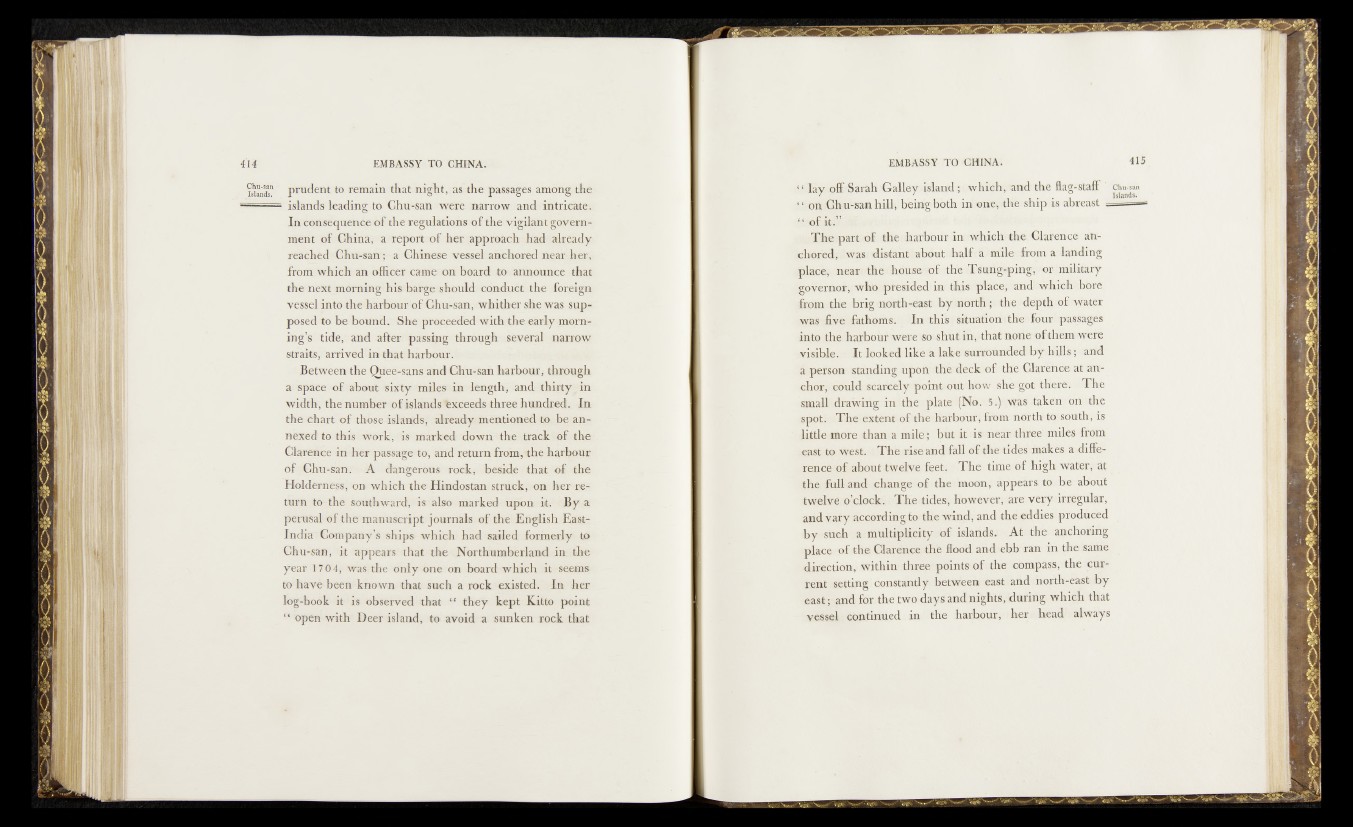
prudent to remain that night, as the passages among the
islands leading to Ghu-san were narrow and intricate.
In eonsequehce of the regulations of the vigilant government
of China, a report of her approach had already
reached Ghu-sani a Chinese vessel anchored near her,
from which an office# came on board to announce that
the next morning his barge should conduct the foreign
vessel into the harbour of Ghu-san, whither she was sups
posed to be bound. She proceeded with the early morning’s
tide, and after passing through several narrow
straits, arrived in that harbour.
Between the Queosans and Ghu-san harbour* through
a space of about sixty miles in lengthy and thirtyyin
width, the number of islands%xceeds three hundred. In
the chart of those-isiands, already-mentioned to-be annexed
to this work, is marked down the track of the
Clarence in her passage to, and return from,-the harbour
or Ghu-san.' - - A dangerous rock, beside that of the
Holderness, on which the Hindostan struck, on herre-
turn to the southward, is also marked upon it. By a;
perusal of the manuscript journals of the English East-
India Company’s ships which had sailed formerly to
Ghu-san, it appears that the Northumberland in the
year 1 7 0 4 , was the only one on board which it seems
to have been known that such a rock existed. In -her
log-book it is observed that “ they kept Kifcte point
“ open with Deer island, to avoid a sunken rock, that
“ lav off Sarah Galley island; whlfe«tend the ftag-staff ' ctvu-saa • ' , • Islands. V OB iOfeu-sanhiil^ berngbotk in one*, the ship is abreast —
“ of it.”
The part of theharbour in iwhieh the Giarence anchored,
was: distant about half a mile,, from a landing
iphsce* near the house'of the BRsung^ing; /or-military
governor*whto ^piesided in this place, samlfewhiehabbre
from the brig north-east by north; Mfhe depth of Abater
In this situMiohrtl^four passages
into the harbour were so-shut in, that norie#f them were
visible. ItdOoked like a lake surrounded by hills 5 and
a person standing upon the deckof the Clarence at anchor,
could-scarcely point out-how she got tMe$it|* The
small drawing in the plate |N®. 5 .) was taken'on the
spot. The extentto#the harbour, from norfeh> tq south, is
little more than a mile; but it is near three' miles from
east to west. The riseand fall of t-he»tides makes a difFe-
rence o&about twelve feet. The''jtifrflS^f?H.ighi'Water,- at
the- full and change of the moon, appears to/be about
twelve. o clock. The .tides, bowever,arevery irregular,
and vary according to the wind, and the eddies produced 1
by siioh a multiplicity of islands. Atthe anchoring
place of the Clarence the flood add ebb ran in the same
direction, within three points of the compass, the current
setting constantly between east and north-east by
east; and for the two days and nights, during which that
vessel continued in the hadbwr> her head always